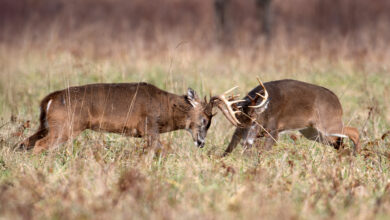How to Have a Successful Evening Turkey Hunting

There’s nothing quite like the thrill of going after a big ol’ gobbler in the prime of the spring turkey season but for those of us who work regular 9-to-5 jobs, getting out to hunt in those critical early morning hours can be a serious challenge.
That’s why I’ve become a big fan of evening turkey hunting over the years.
Heading out in the evenings has allowed me to get in on the action during the week without having to take vacation days or sick leave.
With some strategic scouting and the right tactics, you can absolutely score on a turkey hunt after work. Let me share some hard-earned tips from my own experience.
Can You Turkey Hunt in the Evening?
First off, yes, evening turkey hunting is absolutely legal in most states and on many public and private lands. Double check your local regulations to be sure, but generally speaking, evening is considered a valid time to hunt turkeys during the spring season.
The window is typically from noon until a short time after sunset, but the prime evening hours are the last couple hours before dark when the big toms are headed to the roost for the night.
How to Hunt Turkeys in the Evening
Here are some of the things I find most helpful to do when turkey hunting in the evening.
Follow The Turkey’s Crop
If I have the flexibility, I try to slip out in the middle of the day to listen for turkey activity and get my bearings on where the birds are traveling and feeding.
Turkeys tend to feed heavily in the morning, then loaf around and sleep through the hottest part of the day before feeding again in the late afternoon and evening as they make their way to the roost.
Gobble Like a Turkey
On more than one occasion when hunting turkeys in the evening, some well-timed and realistic sounding turkey calls have helped me lure in a big mature tom.
For whatever reason, turkeys seem to have a hard time resisting the urge to gobble and stake their claim when they hear another bird cutting loose. Even if they’re already headed to roost, that machismo attitude kicks in and they have to go investigate.
I keep a couple of turkey calls on my vest and cup or box call to help me crank out a series of loud, raspy gobbles every 15 minutes or so as I’m hiking into my ambush spot. As soon as a bird gobbles back, I know right where to set up.
Locate the Roost
Some evenings I don’t even bother with calling or setting up a decoy. Instead, I try to quietly sneak in and pinpoint the exact tree where a big tom is getting ready to fly up for the night.
Then I single out a nice natural piece of cover or brush just out of his direct line of sight and settle in about 45 minutes before official sunset.
As long as I stay still and don’t make a move, in my experience the turkeys don’t seem to pick up on my presence. Then when the big bird flies down at first light, that’s when I’m ready and waiting. Multiple times I’ve had toms stroll right by at 10-15 yards without ever detecting me.

Have Patience and Listen Carefully
Evening turkey hunting in Michigan can be an exercise in sitting still for long stretches and paying very close attention to every little noise and movement in the woods.
Turkeys often get talkative as they start thinking about heading to the roost, so you can get clues about their location from a hen cutting or kee-kee call, some soft yelps, or of course a big boisterous gobble ripping through the treetops.
Keep your eyes peeled and glass every open area and ridge you can see in case a group waddles out into view. Be ready for a possible encounter at any second, as a long beard can literally appear out of nowhere in the fading evening light. As long as you’re quiet, you can beat the turkey’s senses and have a successful hunt.
Use a Decoy
Whenever possible, I always try to incorporate a decoy hen or even a Jake decoy into my evening hunting setup. Turkeys tend to be a little less wary and more easily seduced toward a decoy in the evening versus the more cautious attitude they exhibit at first light.
A mounted decoy also gives you another point of reference to focus on, serving as an aiming point or triggering movement to zero in your shot if a gobbler does happen to make an appearance. My motion decoy with a fanning tail has been a real killer for tricking longbeards into range as the sun starts to dip below the treeline.
Evening Turkey Hunting: FAQs
Do turkeys gobble in the evening?
Yes, although not as consistently or frequently as during the first few hours of morning, mature gobblers will absolutely sound off in the evenings as they prepare to fly up to roost for the night.
This gobbling activity could be in response to calling from hunters or it’s often a case of toms gobbling to reassert dominance and let other turkeys know they’re headed to the roosting area. The evening is considered an underrated time to score on a hot gobbling bird.
Is turkey hunting good in the evening?
The evenings can absolutely be a great time for turkey hunting, offering an opportunity for success even for those who have to work during the day. The last couple of hours before dark are often an active time when turkeys are on the move and hunters can be in a position to ambush them.
Of course, evening hunting has some different challenges versus mornings, and it may take some extra effort to learn the specific patterns, travel routes and vocal activity of the local flock. With some strategic scouting and the right tactics, evenings can provide plenty of action.
What time do turkeys fly down?
It’s wise to know how to roost a turkey in the evening, as it plays a huge role in learning their schedule. Turkeys usually fly up to roost for the night starting about 30-60 minutes before complete sundown. The flydown time in the mornings typically occurs within a 30-90 minute window after first light.
Safety is crucial during these periods, as turkeys often don’t make much noise or give warning as they take flight to/from the roost. Always be sure of your target and identify it clearly before taking a shot.
Before you go, get some top turkey hunting tips from Matt Ferland of Otis Technology:
Final Thoughts
I absolutely love the excitement and unique challenge of evening turkey hunting. For a working guy like me who has to balance jobs, family and hunting, it allows me to extend my precious spring days afield into those after-work hours.
Setting up in a strategic location where you’ve scouted turkey activity offers a very realistic chance to punch a tag on a mature longbeard.
Use those evenings to get out there and keep grinding. With the right tactics and some patience, that sunset gobbler could be just around the corner.



One Comment